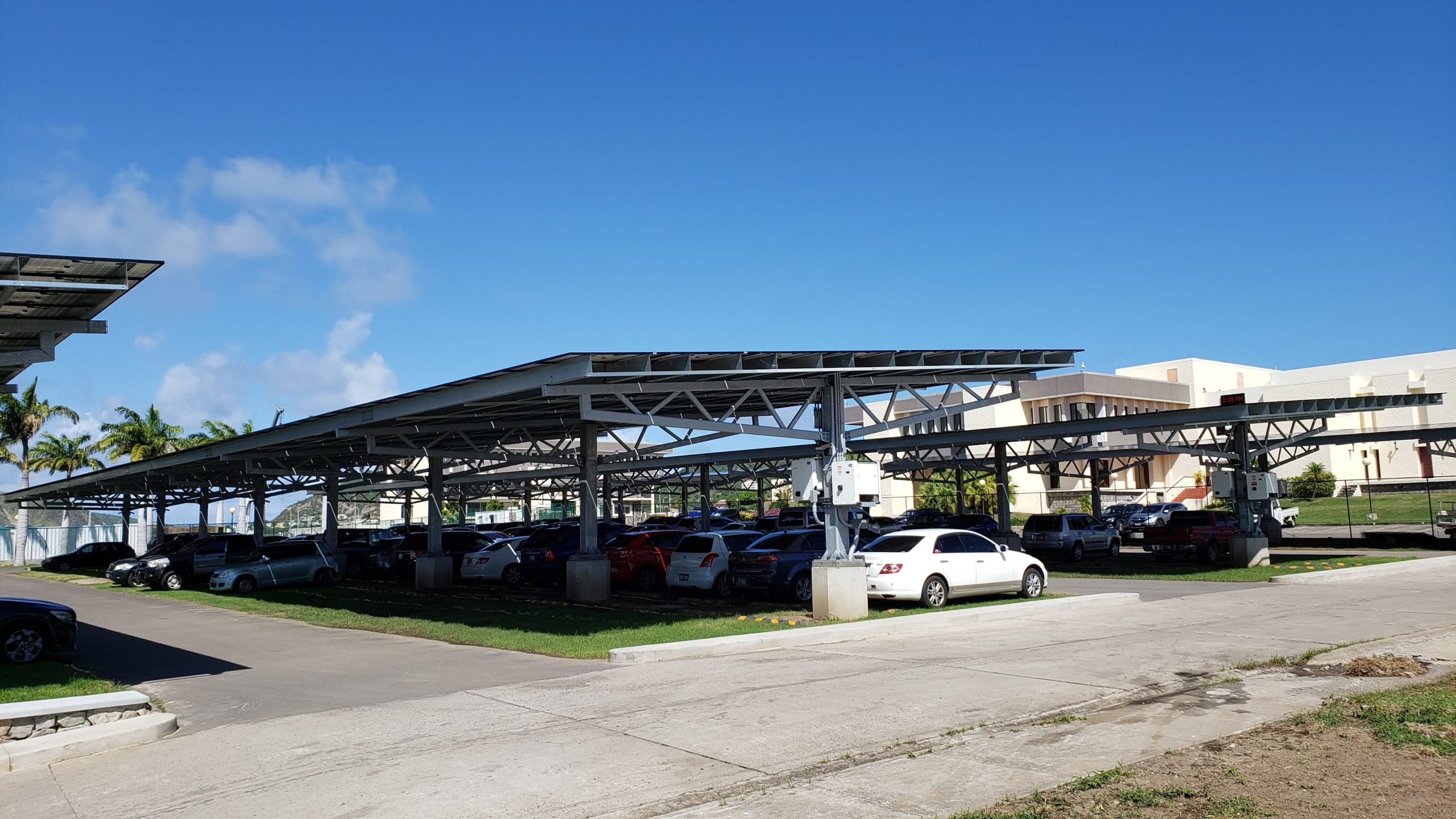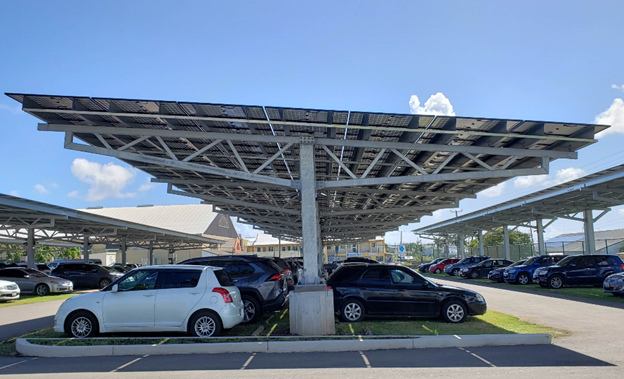The Eastern Caribbean Central Bank (ECCB) has an aggressive goal to reduce their carbon footprint by 2025, and solar energy and energy efficiency are key parts of that strategy. To achieve these goals, ECCB engaged us to engineer and manage the construction of solar-energy carports on their parking lots. We started this project in 2018 and completed Phase 1 in 2019. Phase 2 started in 2019 and will complete in 2020.
We started this project by setting goals with the ECCB regarding budget, quality expectations, and schedule. Then we developed the Bid and Construction Drawings and specifications for the project. Next we put the project out to bid globally, evaluated the bidders, and selected the contractor to execute the construction. Throughout construction we manage the process, responding to RFI’s, driving the schedule, and providing assistance for all the other tasks that are the Owner’s responsibility. Following construction, we inspect, test, commission, develop Owner’s Manuals, train the owner’s team, and assist in the transition to system operation and maintenance.
The two key engineering and construction challenges in the Caribbean are hurricane survivability and corrosion protection. Azimuth has a decade of experience working in the Caribbean from the Bahamas to Grenada, and we integrated best practices into this project to ensure it will continue to deliver safety, performance, and aesthetics for its many decade service life. This is engineered for 180 mph winds, from the massive, spread-footing foundations to the high-strength solar modules. Ordinary solar modules cannot withstand that wind speed, and these modules also have a very high rating for corrosion resistance of the aluminum frames.
This project will offset about half of the energy usage on the campus. Adding energy efficiency will increase further. ECCB also asked us to advise them on energy efficiency strategies to reduce their consumption and power demand. We have done this with many other commercial clients ranging from Las Vegas resorts to major league sporting stadiums, and we anticipate we can help them reduce their energy consumption by 10-15% with less than a 3-year payback. Achieving the net-zero goal also is possible with more investment and innovation.





